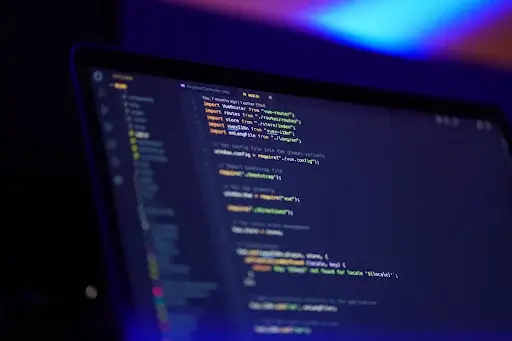What’s the Difference Between Proxies and Scraper API?
When it comes to extracting data from the web, businesses and developers often encounter two key tools: proxies and scraper APIs.
While these tools share similarities in helping users interact with online resources, they operate differently and are suited for distinct use cases. Understanding their differences is crucial for choosing the right solution for your specific needs.
This article dives deep into the technical aspects of proxies and scraper APIs, exploring their functionalities, advantages, and limitations. By understanding these tools, you can optimize your web operations and make informed decisions.

What Are Proxies?
Proxies are an intermediary layer between a client (your device) and a server (the website or online resource you’re accessing).
They relay requests from the client to the server and return the responses. Proxies mask the client’s IP address, enabling anonymity and bypassing geographical or network restrictions.
At their core, proxies are straightforward tools that simply forward traffic while obscuring the user’s identity. They’re widely used for tasks like web scraping, accessing geo-restricted content, and enhancing cybersecurity. Check out our comprehensive article on Automatic Enrollment for additional information.
Types of Proxies
There are several types of proxies, each tailored to different needs:
- Residential Proxies: These use IP addresses assigned by Internet Service Providers (ISPs). They mimic real user behavior, making them ideal for avoiding detection during sensitive tasks like large-scale data collection.
- Datacenter Proxies: These are generated from data centers rather than ISPs. They’re faster and more affordable but are easier to detect and block by websites.
- Rotating Proxies: These change the IP address used for each request or at regular intervals. They’re useful for large-scale web scraping to avoid triggering anti-bot mechanisms.
- Static Proxies: These maintain the same IP address throughout a session, making them suitable for tasks requiring consistent identity, like logging into accounts.
How Proxies Work
When you use a proxy, your device doesn’t connect directly to the target server. Instead, the proxy handles the communication:
- The client sends a request to the proxy.
- The proxy forwards the request to the target server.
- The target server processes the request and sends the response back to the proxy.
- The proxy returns the response to the client.
This process not only masks your IP address but can also offer additional benefits like caching data for faster access and filtering out harmful content.
What Is a Scraper API?
A scraper API is a specialized tool built for extracting data from websites. While proxies simply route requests, a scraper API goes further by automating the entire data extraction process. It handles challenges such as rendering dynamic content, solving CAPTCHAs, and managing headers, making it an all-in-one solution for web scraping.
Unlike proxies, which require manual configuration and additional tools for scraping, scraper APIs streamline the process by handling the technical complexities on your behalf. Find valuable tips and strategies in our article about Benefits of Using AI-Powered Image Design Tools for Your Business.
Key Features of a Scraper API
- Dynamic Content Rendering: Scraper APIs can render JavaScript-heavy pages, making them ideal for modern websites built with frameworks like React, Angular, or Vue.js.
- Integrated Proxy Management: These APIs come with built-in proxy pools, rotating IPs as needed to avoid detection and throttling.
- CAPTCHA Handling: Many scraper APIs automatically solve CAPTCHAs, a common barrier when accessing web data.
- Custom Headers and Cookies: They allow customization of requests to mimic real user behavior, bypassing user-agent checks and accessing content hidden behind login walls.
- Data Structuring: Scraper APIs often return data in a structured format, such as JSON, saving time when parsing raw HTML.
How a Scraper API Works
Using a scraper API simplifies the process of web scraping:
- The client sends a request to the scraper API, specifying the target URL and any parameters (e.g., user-agent or cookie settings).
- The API manages all backend tasks, including rendering content, rotating proxies, and handling CAPTCHAs.
- The API fetches the data and delivers it in a clean, usable format.
This abstraction allows users to focus on utilizing the data rather than dealing with the complexities of scraping infrastructure.
Key Differences Between Proxies and Scraper APIs
While proxies and scraper APIs can both be used for web scraping, their roles differ significantly.
Proxies are foundational tools. They offer flexibility and control but require additional resources for effective use.
For example, if you’re using proxies for web scraping, you’ll also need a scraping library or framework (such as BeautifulSoup, Scrapy, or Selenium) to parse and manage the data. You’ll also need to handle challenges like CAPTCHA solving and dynamic content rendering on your own.
Scraper APIs, on the other hand, are purpose-built solutions. They abstract away the technical details of web scraping, offering a complete package that includes proxy management, request customization, and dynamic content handling.
This makes scraper APIs ideal for users who prioritize simplicity and efficiency over granular control. We have also covered Strategies to Secure Financing Using Business Assets on our website.
When to Use Proxies
Proxies are best suited for scenarios where you need flexibility and fine-grained control over the scraping process. For example:
- Custom Scraping Workflows: If you have a unique use case that requires extensive customization, proxies give you the freedom to build your stack.
- Cost Efficiency: Proxies can be more affordable for simple tasks, like accessing geo-restricted content or routing traffic.
- Standalone Anonymity: Beyond scraping, proxies are useful for maintaining anonymity or managing network traffic.
When to Use a Scraper API
A scraper API is the right choice when you need a streamlined, reliable solution for data extraction. It’s particularly useful for:
- JavaScript-Heavy Websites: Scraper APIs can render dynamic content, which is challenging to handle with proxies alone.
- Rapid Prototyping: If you need quick results without setting up a complex scraping system, a scraper API delivers out-of-the-box functionality.
- High Success Rates: Scraper APIs are optimized to avoid detection and handle CAPTCHAs, ensuring uninterrupted data collection.
Integrating Both Tools
In some cases, the most effective approach involves combining proxies and scraper APIs. For example, you might use a scraper API for complex tasks involving dynamic content and CAPTCHAs while relying on proxies for simpler tasks like regional content access or routing bulk traffic.
Services like GoProxies provide robust proxy solutions that integrate seamlessly with external scraping tools, enabling businesses to build hybrid setups that maximize efficiency and scalability.
Conclusion
While proxies and scraper APIs share overlapping purposes, their differences make them suited to distinct use cases. Proxies offer control and flexibility, allowing you to build customized solutions for specific tasks.
Scraper APIs, on the other hand, simplify web scraping by automating the process and handling complex challenges like JavaScript rendering and CAPTCHA solving.
Choosing the right tool—or combination of tools—depends on your technical requirements and objectives.
By understanding the strengths and limitations of proxies and scraper APIs, you can optimize your web scraping or data extraction efforts, ensuring efficient, scalable, and reliable operations. You can visit Fintechzoom.com for more trending posts.




